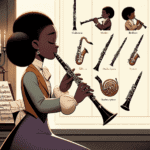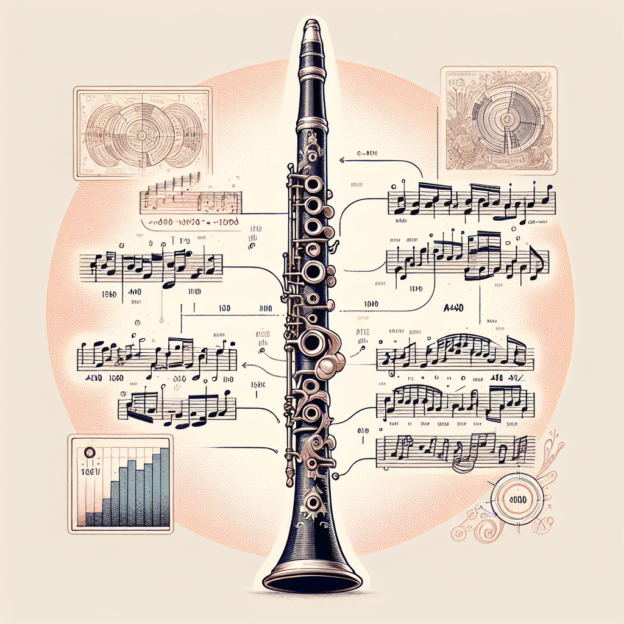The Fascinating Evolution of Clarinet Pitch Standards
The history of the clarinet is full of interesting stories, but one of the most captivating aspects is how historical clarinet pitch standards have changed over time. Have you ever wondered how this instrument found its voice through different pitches? Or why we use the standards we do today? Let's explore this musical journey together!
Clarinets from the past were quite different from what we see today. When the instrument first appeared in the 18th century, there wasn't a single standard for pitch. Each country had its own system! Can you picture yourself traveling to Europe with your clarinet, only to discover that your tuning doesn't match the local musicians? It's a pretty wild thought, isn't it?
Early Pitch Standards: The French System
The first clarinets were tuned to what musicians call the French pitch or French system. This pitch was set around 392 Hz, which is lower than today's standard of A440 Hz. Imagine playing a half-step below what we're used to now! Other regions had their own variations, some higher and some lower. It wasn't until the late 1800s that people started moving towards the A440 Hz standard we use today. It's fascinating to think about all these different musical traditions coming together!
| Time Period | Pitch Standard | Notes |
|---|---|---|
| 18th Century | French Pitch (392 Hz) | Lower than modern standard |
| 19th Century | Various regional standards | Pitch varied by location |
| Late 19th Century onwards | A440 Hz | Modern standard |
Factors Influencing Pitch
It's amazing to see how trends, technology, and geography have shaped pitch over time. Whether playing baroque music or modern jazz, musicians face the ongoing challenge of adapting to different pitch standards. They often need to adjust their instruments for various ensembles. Companies like Martin Freres have been great at making versatile instruments that can handle these changes without losing quality.
The type of ensemble also affected pitch standards. A chamber group might use a different pitch than a full orchestra. Even local churches had their own unique pitches! Picture clarinetists rushing to tune their instruments before a church service, trying to match the local pitch. It must have felt like juggling while riding a unicycle – quite a balancing act! And that's just the beginning of the excitement.
The Transition to Modern Standards
In the 1800s, orchestras started using the A440 standard. This put clarinetists in a tricky spot. Should they stick with the old tunings or embrace the new sound? Luckily, clarinet makers like Martin Freres came up with new designs that made it easier for musicians to adapt to different pitch ranges.
As time went on, clarinetists started using special reeds and mouthpieces for specific pitch ranges. The quality of these parts really affects the tone and pitch of the instrument. Musicians had to learn how to adjust their equipment and playing techniques to get the sound they wanted. Thanks to brands like Martin Freres, players now have lots of options to help them adapt to different performance situations.
Musical Styles and Their Impact on Pitch
Different types of music often have their own pitch standards. Early jazz musicians, for example, worked in unique conditions. They often created music that went against the usual rules of their time. These musicians faced the challenges of different pitch standards head-on and helped change how clarinets were played. They found their own voices in the midst of all these different pitches.
Modern Technology and Pitch
Today, we have some great tools to help with tuning. There are apps and electronic devices that make it much easier to get the right pitch. Modern clarinetists can use digital tools to practice, keep track of their tuning, and even play with musicians from all over the world! It's amazing how much access and reach today's clarinetists have. Isn't that cool?
Chamber vs. Orchestral Pitch
Here's another interesting fact: when everyone was switching to A440, there was a lot of talk about ‘chamber pitch' versus ‘orchestral pitch.' This meant that clarinetists had to know both standards well. It's kind of like a chef needing to know many different spices for various dishes. Musicians had to be flexible and able to blend in with any group they played with.
Conclusion
The history of clarinet pitch standards might seem complicated, but it's really a story full of creativity and beauty. As musicians face new challenges, the clarinet keeps evolving. Companies like Martin Freres help by making instruments that respect tradition while also embracing new ideas. So, the next time you play a clarinet, think about the long journey that has shaped the sound we love today!







